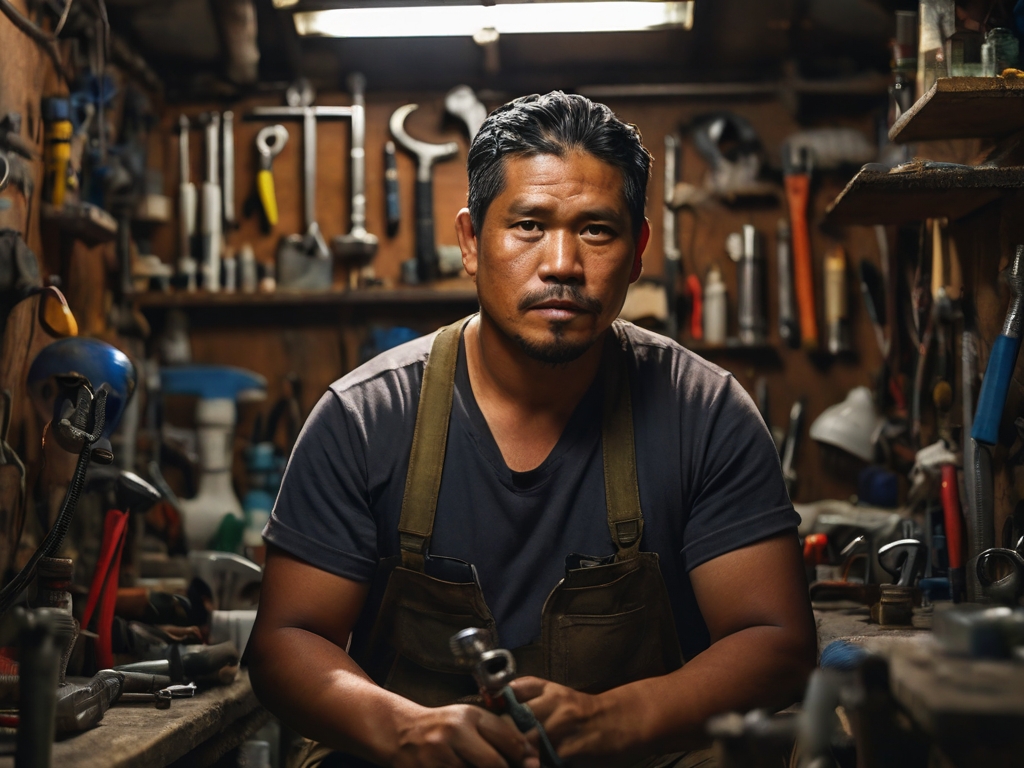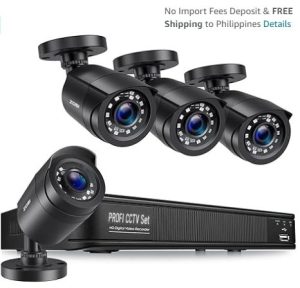Plumbing Services Explained: An In-depth Look at Their Importance

Plumbers play an integral role in our lives, ensuring the proper functionality of water and gas systems that modern lifestyles rely upon [1]. Their expertise in the assembly, installation, and repair of pipes, fixtures, and fittings not only provides access to clean water but also enables safe waste removal, significantly impacting public health and hygiene [1]. With advancements in technology and water management, plumbers are at the forefront of optimizing water usage through conservation and reuse, showcasing their critical contribution to environmental sustainability [1].
The importance of plumbing services extends beyond just immediate repairs; it encompasses preventive maintenance and sophisticated installations such as septic tank construction and toilet installation [1][2]. Whether it’s through routine plumbing repair services or more complex projects, the role of professionals in enhancing home safety and promoting efficient water use cannot be understated [2]. As homeowners look to combine DIY efforts with professional expertise, selecting the right plumbing service provider becomes crucial in ensuring the longevity and efficiency of their plumbing systems [1][2].
Common Plumbing Issues and How Professional Services Address Them
Hiring a professional plumber comes with the assurance that common plumbing issues are managed with the utmost expertise, utilizing the necessary tools and knowledge for the job [4]. These professionals offer a broad spectrum of services that cater to various needs, from emergency responses to routine maintenance [6].
Common Plumbing Issues Addressed by Professionals:
- Burst Pipes: Immediate action is required to prevent water damage, with professionals offering swift repairs [12].
- Clogged Drains: Utilizing specialized equipment, plumbers efficiently clear blockages caused by grease, hair, and other debris [10][11].
- Leaking Faucets and Pipes: Through meticulous inspection and repair, professionals prevent the escalation of minor leaks into major issues [10].
Professionals are not only equipped to handle immediate repairs but also engage in preventive measures to safeguard against future problems. Their expertise extends to detecting leaks that could lead to water damage and structural issues, ensuring a safe living environment [7]. Moreover, their role is crucial in the proper installation and maintenance of sewage and drainage systems, which are vital for public health and environmental protection [8]. Through regular inspections and maintenance, professional plumbers help homeowners avoid costly emergencies, making their services indispensable for the longevity and efficiency of plumbing systems [3][14].
The Importance of Preventive Plumbing Maintenance
Preventive plumbing maintenance is not just a routine check; it’s a comprehensive approach to safeguarding your home’s plumbing system, ensuring it functions efficiently and lasts longer. By adopting a preventive stance, homeowners and businesses can avoid the inconvenience and expense of sudden plumbing failures.
- Regular Inspections and Maintenance: Key activities include inspecting for leaks, cleaning drains, servicing water heaters, and checking water pressure. These tasks help identify potential issues early, preventing major problems and ensuring the plumbing system operates within optimal parameters [20][22].
- Leak Detection and Pipe Insulation: Early detection of leaks is crucial to prevent water wastage and damage. Additionally, insulating pipes in colder climates can prevent freezing, which might lead to burst pipes and extensive water damage [22].
- Fixture and Water Heater Maintenance: Regular maintenance of fixtures and water heaters can prevent the deterioration and inefficient performance of these components. This includes checking for signs of corrosion, sediment buildup, and ensuring that all components are functioning correctly [22].
By investing in preventive plumbing maintenance, homeowners can improve water efficiency, extend the lifespan of plumbing fixtures, and ensure the overall safety and functionality of their plumbing system. Regular maintenance not only saves money in the long run but also contributes to a healthier living environment [19][23].
DIY vs. Professional Plumbing Repairs: Understanding the Risks
When considering DIY vs. professional plumbing repairs, it’s essential to understand the risks and benefits associated with each approach:
Risks of DIY Plumbing Repairs:
- Costly Mistakes: Lack of familiarity with plumbing codes and best practices can lead to expensive errors [6].
- Safety Hazards: The danger of electrical shocks, burns, and respiratory injuries due to unfamiliarity with tools and safety equipment [6][27].
- Property and Financial Damage: Ineffective repairs can cause significant property damage and financial loss [6][27].
- Time and Water Wastage: DIY repairs can be time-consuming and may result in water wastage [6].
- Insurance Issues: Most insurance policies do not cover damage caused by DIY plumbing efforts [6].
Benefits of Professional Plumbing Repairs:
- Expertise and Efficiency: Professionals possess the necessary knowledge and experience to handle complex issues efficiently [28].
- Safety Compliance: Adherence to building codes and safety precautions ensures the functionality and safety of the plumbing system [28].
- Long-term Savings: Properly performed repairs by professionals can save money in the long run and increase home value [27].
DIY Plumbing: A Balanced View:
- While DIY plumbing allows homeowners to learn basic skills and save on labor costs, the potential for costly mistakes and property damage makes it a risky endeavor [6]. Professional plumbing services offer a safer and more reliable solution, especially for complex or high-risk repairs [28].
How Plumbing Services Enhance Home Safety
Plumbing services significantly enhance home safety by ensuring the efficient operation and maintenance of critical systems:
- Water Heater Safety and Efficiency: Proper installation and maintenance of water heaters by plumbing services are crucial. This ensures they operate safely, avoiding risks of malfunction or hazards that could compromise home safety [7].
- Improved Water Quality: The installation of water filtration systems by professional plumbers improves the overall water quality in the home. This contributes to a safer and healthier living environment by reducing contaminants and ensuring access to clean water [7].
- Prevention of Mold and Water Damage: Regular inspections and maintenance of the home’s plumbing system help in preventing water leaks that could lead to mold growth and rot. This not only preserves the structural integrity of the home but also prevents health issues associated with mold exposure. Furthermore, modern plumbing technology, such as video cameras and leak detection devices, allows for accurate diagnosis and repairs, preventing potential hazards [3][14][8].
By ensuring a clean and safe water supply and preventing structural damages, plumbing services play a pivotal role in maintaining the safety and well-being of residents, demonstrating the critical importance of regular plumbing maintenance and professional installations [2][8].
Selecting the Right Plumbing Service Provider
Selecting the right plumbing service provider is crucial for ensuring the longevity and efficiency of your plumbing systems. Here are key factors to consider:
- Credentials and Insurance:
- Expertise and Services Offered:
- Professionalism and Reliability:
- Reviews and Estimates:
By considering these factors, homeowners can make an informed decision, ensuring they hire a plumbing service provider that meets their needs and expectations.
 Conclusion
Conclusion
Throughout this article, we’ve delved into the critical role that plumbing services play in maintaining the functionality and safety of our living environments. We’ve explored a wide array of topics, from the indispensable nature of plumbing professionals in ensuring efficient water use and safe waste disposal, to the consequences of choosing DIY plumbing repairs over professional expertise. The discussions emphasized not only the immediate benefits of expert plumbing services, such as preventing water damage and ensuring proper installations, but also their long-term impact on preserving the integrity of our homes and the environment.
The importance of selecting the right plumbing service provider cannot be overstated, as it significantly influences the quality, efficacy, and durability of plumbing systems. By understanding the risks associated with DIY projects and recognizing the value of professional interventions, homeowners are better equipped to make informed decisions that protect their homes and well-being. With the insights provided here, it becomes clear that prioritizing professional plumbing services and preventive maintenance is not just a matter of convenience, but a crucial investment in the health, safety, and sustainability of our living spaces.
FAQs
What makes plumbing so crucial?
Plumbing plays a pivotal role in ensuring access to and conservation of water, making it an essential system in our lives. It connects us to water, an invaluable resource, enabling us to drink, eat, cook, clean, work, and enjoy various aspects of life.
Can you provide a simple explanation of how plumbing works?
A home’s plumbing system consists of two main subsystems. One subsystem is responsible for bringing fresh water into the house, while the other deals with the removal of wastewater. The incoming water is pressurized, allowing it to reach all areas of the home, including upstairs and around corners.
What are plumbing services?
Plumbing services encompass a wide range of tasks including the design, installation, construction, replacement, service, repair, alteration, or modification of the plumbing system. This system includes pipes, fixtures, and other apparatuses used for delivering the water supply to a building and for the removal of liquid and water-carried wastes.
Why is it important to maintain quality in plumbing?
Quality in plumbing is paramount because a plumbing business’s reputation and the effectiveness of its work heavily depend on it. Utilizing high-quality products and practices helps prevent leaks, blockages, and other plumbing issues, ultimately saving time and money.
References
[1] – https://southwestpipetrades.com/the-importance-of-plumbers
[2] – https://www.pmmag.com/articles/97077-top-10-reasons-why-plumbing-is-so-important
[3] – https://agentblog.nationwide.com/commercial-insights/plumbing-industry-overview-and-trends/
[4] – https://benjaminfranklinplumbingfortworth.com/plumbing-blog/the-ultimate-guide-to-plumbing-services/
[5] – https://refinedplumbingsunshinecoast.com.au/the-importance-of-preventative-plumbing-maintenance/
[6] – https://jblantonplumbing.com/7-risks-do-it-yourself-vs-professional-plumbing-services/
[7] – https://benjaminfranklinplumbingfortworth.com/plumbing-blog/10-ways-plumbing-service-can-help-you/
[8] – https://medium.com/@akm.adsexpert/the-essential-role-of-plumbing-services-in-ensuring-comfort-and-health-211b3f23e887
[9] – https://www.expertplumbers.com/blog/the-role-of-a-plumber-in-home-renovation/
[10] – https://www.allenstristate.com/top-5-plumbing-problems-solved-by-professional-plumbers/
[11] – https://www.architecturaldigest.com/story/plumbing-problems
[12] – https://www.quora.com/What-kind-of-plumbing-issues-must-be-repaired-by-a-professional-plumber
[13] – https://www.angi.com/articles/plumbing-problems.htm
[14] – https://medium.com/@johno95granto/the-importance-of-plumbing-services-22143b22289c
[15] – https://ifixxeruk.medium.com/choosing-the-right-plumbing-services-a-comprehensive-guide-665bb0e47b82
[16] – https://mistersewer.com/resources/how-important-is-regular-plumbing-maintenance/
[17] – https://mlplumbing.com.au/the-importance-of-preventative-plumbing-maintenance/
[18] – https://stackheating.com/what-is-preventative-plumbing-maintenance/
[19] – https://www.quora.com/What-is-plumbing-preventive-maintenance
[20] – https://www.amica.com/en/resources/home/maintenance/9-preventive-plumbing-tips.html
[21] – https://metropha.com/blog/how-preventive-plumbing-maintenance-saves-you-money/
[22] – https://shaferservices.com/protecting-your-pipes-the-importance-of-preventative-plumbing-maintenance/
[23] – https://homexplumbing.com/blog/preventive-plumbing-services/
[24] – https://absolutefix.com/blog/6-benefits-of-regular-house-plumbing-inspections/
[25] – https://www.mygeorgiaplumber.com/the-importance-of-plumbing-maintenance/
[26] – https://nirplumbing.com/the-benefits-of-regular-commercial-plumbing-maintenance/
[27] – https://www.specialtydrainllc.com/blog/2023/november/the-hidden-dangers-of-diy-plumbing-repairs/
[28] – https://jtplumbingservicesllc.com/the-hidden-dangers-of-diy-plumbing-and-when-to-hire-a-professional/
[29] – https://www.mastertechplumbing.com/the-surprising-ways-that-plumbing-contributes-to-your-everyday-health/
[30] – https://waterworkplumbing.com/5-ways-to-choose-the-best-plumbing-company-for-you/
[31] – https://royaltyplumbing.com/7-factors-to-consider-when-choosing-a-plumbing-repair-company/
[32] – https://usaborescopes.com/news/the-ultimate-guide-to-hiring-the-best-plumbing-company/


